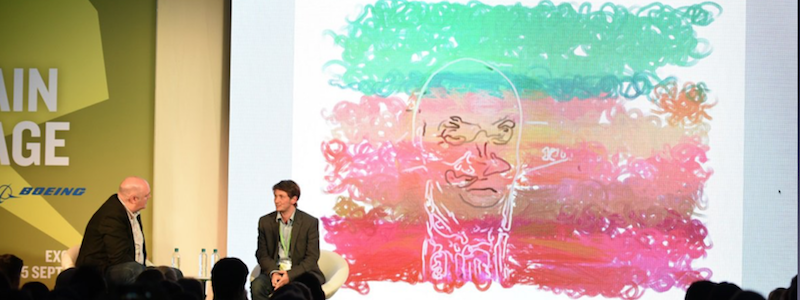
I’m really looking forward to working with Professor Jon McCormack, who leads the SensiLab – he is one of the few people worldwide who has had both serious artistic and scientific impact through generative systems, and has contributed a lot to the Computational Creativity cause. The Sensilab web pages distinguish the group as believing that “the best way to learn is by making things” with work that is “not limited by discipline, approach or material”. Both of these ideas are very close to my heart (so I’ve come to the right place!) and I have always built things in cross-disciplinary ways. In fact, like Jon, I make things which make things: generative systems.
Some of the practical projects I’m known for include:
The HR system which made new discoveries published in the mathematical literature and blurred the boundaries between machine learning, constraint solving and theorem proving.
The Painting Fool project , where the aim is for the software to be taken seriously as a creative artist in its own right. It’s art has been exhibited around a dozen times.
The WhatIf Machine, where the software invents fictional ideas of cultural value, one of which was used as the basis for a West-End musical called Beyond the Fence.
The Wevva casual creator, that helps novices design casual games directly on their phone in minutes, assisted by an evolutionary AI system, published on the iOS store.
With the career re-boot afforded by my new situation, I have started looking at a new domain for the simulation of creative behaviour, namely: software engineering. While most people in my field are experienced coders, studying how people are creative while coding and implementing automated program generation systems has barely been looked at. Ed Powley, Michael Cook and I wrote a position paper for the 2018 International Conference on Computational Creativity, which proposed that we take a serious look at creative systems for code generation.
We won the best paper award at the conference, which shows some level of support – maybe there will be a push across the community to get software to write software in creative ways.
In the paper, our first suggestion is that we concentrate on using automatic code generation to problematise the world. This could mean taking a dataset and generating code which manipulates the data to highlight a pattern that the user didn’t know he/she was looking for – we call that finding “unknown unknowns” (channeling our inner Donald Rumsfield!) Equally, problematising the world could involve generating software which does something new, raising technical issues to be solved, but also raising questions about the creative affordances of the code. As an example, imagine if software invented the world’s first edge-detection algorithm in graphics. Some people would be interested how the software worked and how it could be improved; others would be interested in what images could be created with edge detection, and how this might work for them artistically. All of these are great problems to have, and we hope to provide people with lots of difficult problems in the future!
Our second suggestion is that the generated code should be celebrated as an artistic/scientific artefact of value in its own right, over and above any benefits gained from running it. To this end, we’re looking at applications where an understanding and appreciation of the code is at least as important as running it. A good example of this that we are beginning to work on is the automatic generation of videogame mechanics, building on the work of Michael Cook with his ANGELINA system. Here, in order to convey information to players about the way in which a mechanic influences gameplay, designers will likely need to inspect and cherish the code. I plan to reach out to the thriving game design community in Melbourne, engaging with studios around topics of procedural content generation and the democratisation of game design afforded by AI support.
It’s a very exciting time to be joining the faculty of Information Technology at Monash, as the new Dean, Professor Jon Whittle, is successfully pushing through a programme of hirings to expand the faculty, building on an already impressive reputation. I hope to be working closely with SensiLab members on generative projects which problematise the world and help us to understand the creative affordances of software generation for both people and computational systems.
About the Author
 |
Simon is a leading artificial intelligence researcher specialising in the study of Computational Creativity. His research aims to develop new kinds of computational systems where the software itself takes on creative responsibilities. His research has found significant application in both art and science projects. Follow Simon on twitter |
|---|---|